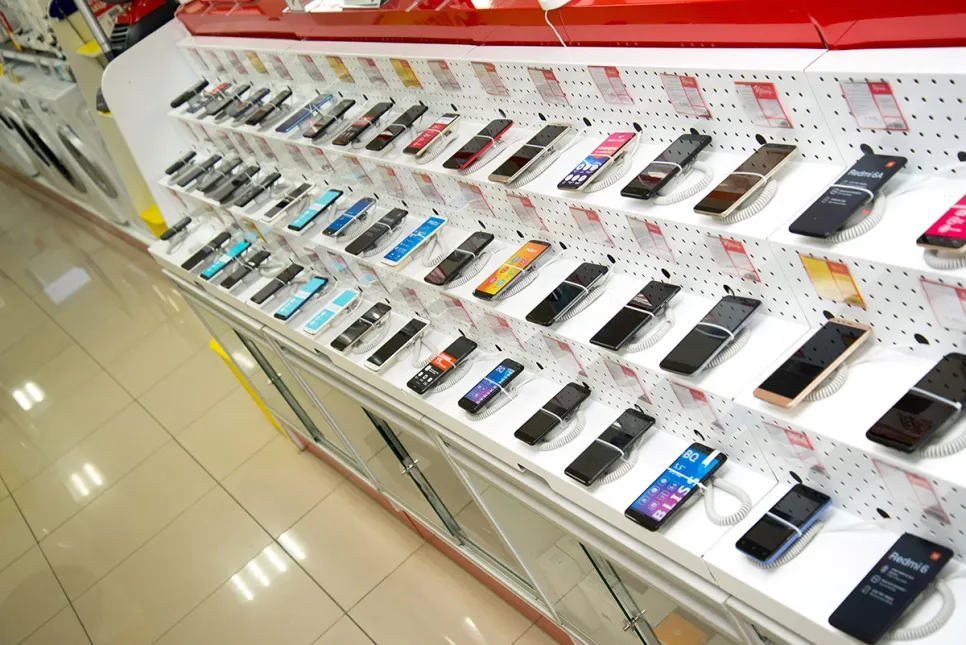Counterpoint Revised Down Its 2026 Smartphone Forecasts
Global smartphone shipments are expected to decline 2.1% in 2026 as surging component costs are likely to impact demand, according to Counterpoint Research.

The COVID-19 pandemic continued to impact the global mobile phone industry, as sales of smartphones to end users totaled 295 million units, a decline of 20.4% in the second quarter of 2020, according to Gartner. Among the top five smartphone vendors, Samsung experienced the largest decline in sales while Apple’s smartphone sales were nearly flat year-over-year. Although Huawei also declined in smartphone sales year-over-year, it experienced 27.4% growth, quarter-over-quarter, moving it into a virtual tie with Samsung for the No.1 position.
Almost all major markets, except China, continued to face some form of shelter-in-place restrictions for most of the second quarter of 2020 which led to continued declining smartphone demand. “The improved situation in China saw demand recovering quarter- over-quarter,“ said Anshul Gupta, senior research director at Gartner. “Travel restrictions, retail closures and more prudent spending on nonessential products during the pandemic led to the second consecutive quarterly decline in smartphone sales this year.“
Even with increased demand, smartphone sales in China declined 7% in the second quarter of 2020, with nearly 94 million smartphones sold. India which adopted rigorous lockdowns recorded the worst smartphone sales decline (-46%) among the top five countries in the world. Samsung sold nearly 55 million smartphones in the second quarter of 2020, a decline of 27.1% year on year. “The COVID-19 pandemic continued to negatively affect Samsung’s performance in the second quarter of 2020,“ said Gupta. “Demand for its flagship S Series smartphones did little to revive its smartphone sales globally.“
Worldwide Top 5 Smartphone Sales in 2Q20 (Thousands of Units)
Vendor | 2Q20 Units | 2Q20 Share | 2Q19 Units | 2Q19 Share | Growth |
Samsung | 54,759.4 | 18.6 | 75,111.8 | 20.3 | -27.1 |
Huawei | 54,125.0 | 18.4 | 58,055.7 | 15.7 | -6.8 |
Apple | 38,386.1 | 13.0 | 38,522.9 | 10.4 | -0.4 |
Xiaomi | 26,095.2 | 8.9 | 33,250.7 | 9.0 | -21.5 |
OPPO | 23,612.1 | 8.0 | 28,070.2 | 7.6 | -15.9 |
Others | 97,692.1 | 33.2 | 137,282.5 | 37.1 | -28.8 |
Total | 294,669.9 | 100.0 | 370,293.9 | 100.0 | -20.4 |
Huawei’s smartphone sales dropped 6.8% and totaled 54 million units year on year. “Huawei’s performance in China helped it avoid a worse quarterly performance,“ said Gupta. “Huawei extended its lead in China where it captured 42.6% of China’s smartphone market in the second quarter of 2020. Huawei put in place an aggressive product introduction and sales promotion in China in particular and benefited from the strong support of communications services providers for its 5G smartphones.“
Apple sold 38 million iPhones in the second quarter of 2020, a decline of 0.4% year-over- year. “Apple’s iPhone sales fared better in the quarter than most smartphone vendors in the market and also grew sales quarter-over-quarter,“ said Annette Zimmermann, research vice president at Gartner. “The improved business environment in China helped Apple achieve growth in the country. In addition, the introduction of the new iPhone SE encouraged users of older phones upgrade their smartphones.“